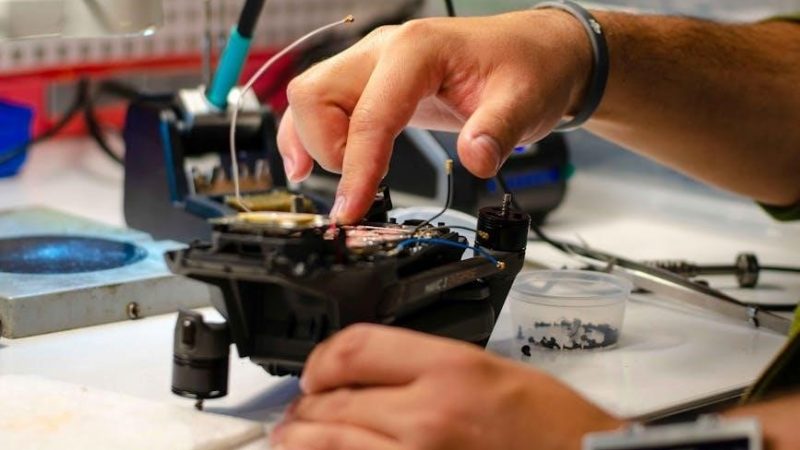kenmore progressive vacuum manual
Kenmore Progressive Vacuum Manual⁚ A Comprehensive Guide
This guide provides a complete resource for your Kenmore Progressive vacuum, covering operation, maintenance, and troubleshooting. Find answers to your questions, from locating your manual to resolving common issues and extending your vacuum’s lifespan. Access helpful resources online and learn essential maintenance tips for optimal performance.
Locating Your Kenmore Vacuum Manual
First, check the original packaging your Kenmore vacuum came in. Many manufacturers include the user manual inside the box. If you can’t find it there, thoroughly search your home. Manuals often end up in storage areas, drawers, or on shelves with other appliance documentation. Look for a printed copy, as some models don’t have readily available online manuals. If your search proves fruitless, don’t despair! Many online resources exist to help you obtain a copy. Remember to note your vacuum’s model number – it’s crucial for finding the correct manual. This number is typically located on a sticker on the vacuum itself, often on the underside or back. Having this number readily available will significantly speed up your search process for your Kenmore Progressive vacuum manual.
Downloading Kenmore Vacuum Manuals Online
The internet offers several avenues for finding your Kenmore Progressive vacuum manual. Start by visiting the official Kenmore website. Their support section usually has a searchable database of manuals; input your model number for precise results. If you can’t find it there, try searching on general search engines like Google, Bing, or DuckDuckGo. Use specific keywords such as “Kenmore Progressive vacuum manual [model number]” to refine your results. Be cautious of unofficial websites; always verify the source’s legitimacy before downloading. Many sites specialize in providing appliance manuals, often offering PDFs for free download. These sites can be helpful if the official Kenmore website doesn’t have your model listed. Remember to download from reputable sources to avoid malware or incorrect documentation. Always check the file type; a PDF is the standard format for user manuals. Once downloaded, save the file to your computer for easy access.
Accessing Manuals via Sears Parts Direct
Sears Parts Direct, a prominent online retailer of appliance parts and manuals, is another excellent resource for finding your Kenmore Progressive vacuum manual. Their website features a comprehensive parts and diagrams section, often including downloadable manuals. To access your manual, navigate to the Sears Parts Direct website and use their search function. Enter your Kenmore vacuum’s model number precisely, as slight variations can lead to incorrect results. Once you’ve found your model, look for a link to download the owner’s manual or user guide. The manual will typically be a PDF file, readily downloadable and printable for offline viewing. Sears Parts Direct is a trusted source for appliance information, ensuring you receive the correct and up-to-date documentation for your specific Kenmore vacuum model. If you encounter any difficulties, consider contacting their customer support for assistance in locating your manual.
Kenmore Vacuum Cleaner Models and Manuals
Kenmore produces a wide array of vacuum cleaner models, each with its own unique features and specifications. This diversity necessitates model-specific manuals to ensure users have the correct instructions and troubleshooting guides; Locating the right manual is crucial for optimal performance and maintenance. The model number is typically found on a label affixed to the vacuum itself; it’s often located on the back or underside of the machine. This number is essential when searching for your manual online or contacting customer support. Kenmore’s extensive model range includes upright, canister, and handheld vacuums, each requiring specific instructions for assembly, operation, and maintenance. Remember to always specify the exact model number when seeking assistance or downloading a manual to guarantee you receive the correct documentation for your particular Kenmore vacuum cleaner. Without the correct model number, obtaining the right manual becomes significantly more challenging.
Troubleshooting Common Issues
This section addresses frequent problems encountered with Kenmore Progressive vacuums, offering solutions for mechanical, electrical, and canister-specific issues. Resolve common problems quickly and efficiently.
Identifying and Resolving Mechanical Problems
Mechanical issues in your Kenmore Progressive vacuum cleaner can range from simple clogs to more complex problems requiring part replacement. Begin troubleshooting by checking for obstructions in the hose, wand, or nozzle. A clogged hose can significantly reduce suction; carefully inspect and clear any debris. If the brush roll isn’t spinning, check the belt for breakage or wear; A worn belt will need replacing. Examine the vacuum’s wheels and ensure they rotate freely; replace or clean any obstructed wheels. Persistent problems, such as a malfunctioning brush roll despite a new belt, or a consistently weak suction even after clearing blockages, may indicate a more serious mechanical issue requiring professional attention or a deeper dive into the vacuum’s internal components. Refer to your specific Kenmore model’s manual for detailed diagrams and instructions on accessing and repairing internal mechanisms. Remember safety first⁚ always disconnect the vacuum from the power source before undertaking any repairs. Improper handling can lead to injuries or further damage.
Addressing Electrical Issues in Kenmore Vacuums
Electrical problems in your Kenmore vacuum can stem from various sources. First, check the power cord for any visible damage, such as fraying, cuts, or exposed wires. A damaged cord needs immediate replacement; never use a vacuum with a compromised cord. Ensure the power outlet is functioning correctly by testing it with another appliance. If the vacuum doesn’t turn on, check the power switch; it might be faulty or stuck. Inspect the vacuum’s internal fuses; a blown fuse will interrupt power flow. Replacing a blown fuse is usually straightforward, but always refer to your vacuum’s manual for the correct fuse type and amperage. For more complex electrical issues, such as the motor not running or intermittent power failure, avoid attempting DIY repairs. Incorrect handling of electrical components can be dangerous. Contact a qualified repair technician or the Kenmore customer service for assistance. Never attempt to repair electrical components yourself unless you possess the necessary expertise and safety precautions are followed diligently.
Understanding and Fixing Canister Vacuum Problems
Canister vacuums, while powerful, can experience unique issues. A common problem is reduced suction. This often indicates a clogged filter or dust bag. Regularly check and replace these components as needed, following the instructions in your Kenmore manual. Examine the hose for blockages; debris can restrict airflow. Inspect the wand and attachments for clogs as well. If the canister isn’t emptying properly, make sure the release mechanism is functioning correctly. Sometimes, the problem lies with the canister’s seal; a faulty seal can prevent proper suction or create leaks. If the vacuum makes unusual noises, such as grinding or rattling, it could be a sign of a mechanical problem within the motor or other components. Do not attempt to disassemble the motor yourself. Persistent issues that you cannot resolve by checking the filter, hose, or attachments require professional assistance. Contact a qualified repair technician or the Kenmore customer service for diagnosis and repair to avoid further damage.
Maintenance and Care
Regular maintenance ensures your Kenmore vacuum operates efficiently and lasts longer. Proper care includes cleaning filters, replacing worn parts, and storing it correctly. This section details these essential steps for optimal performance.
Regular Maintenance for Optimal Performance
Maintaining your Kenmore Progressive vacuum cleaner regularly is crucial for peak performance and longevity. Empty the dustbin or replace the dust bag after each use to prevent clogs and maintain suction power. Clean the filters frequently, as per the manufacturer’s recommendations; clogged filters significantly reduce suction. Check the brush roll for hair and debris tangles; clear these regularly to avoid damage to the motor. Inspect the hose and attachments for any damage or blockages; replace or repair as needed. Pay attention to the vacuum’s overall condition⁚ note any unusual noises, smells, or performance issues. Address minor problems promptly to prevent them from escalating into major repairs. A well-maintained Kenmore vacuum will provide years of reliable service. Remember to consult your user manual for detailed instructions specific to your model.
Replacing Parts and Filters
Replacing worn-out parts and filters in your Kenmore Progressive vacuum is essential for maintaining optimal cleaning performance and extending the life of your appliance. Regular filter replacement is crucial; a clogged filter restricts airflow, reducing suction and potentially damaging the motor. Consult your user manual for the recommended replacement schedule and appropriate filter types. When replacing the dust bag, ensure it’s correctly installed to prevent leaks and maintain suction. Check the brush roll regularly for wear and tear; replace it if it’s frayed or damaged to avoid scratching floors. Other parts, like the belt or hose, may require replacement over time due to normal wear and tear or accidental damage. Sears Parts Direct and other authorized retailers offer genuine Kenmore replacement parts. Always use genuine parts to ensure compatibility and maintain the vacuum’s warranty. Replacing parts promptly prevents further issues and keeps your Kenmore vacuum running efficiently.
Extending the Lifespan of Your Kenmore Vacuum
Prolonging the life of your Kenmore vacuum involves consistent care and maintenance. Regular cleaning of the vacuum’s exterior and internal components prevents dust and debris buildup, which can hinder performance and damage the motor. Always empty the dust bag or canister when it’s about two-thirds full to avoid overfilling. Regularly check and clean or replace filters according to the manufacturer’s recommendations. Inspect the brush roll for wear and tear and replace it as needed to prevent floor scratching. Store your vacuum in a clean, dry place to prevent moisture damage. Avoid using harsh chemicals or abrasive cleaners on the vacuum’s exterior. Carefully inspect the power cord for any signs of damage or fraying; replace a damaged cord immediately. Gentle handling and proper storage will significantly increase the life and efficiency of your Kenmore vacuum, ensuring years of reliable cleaning.




